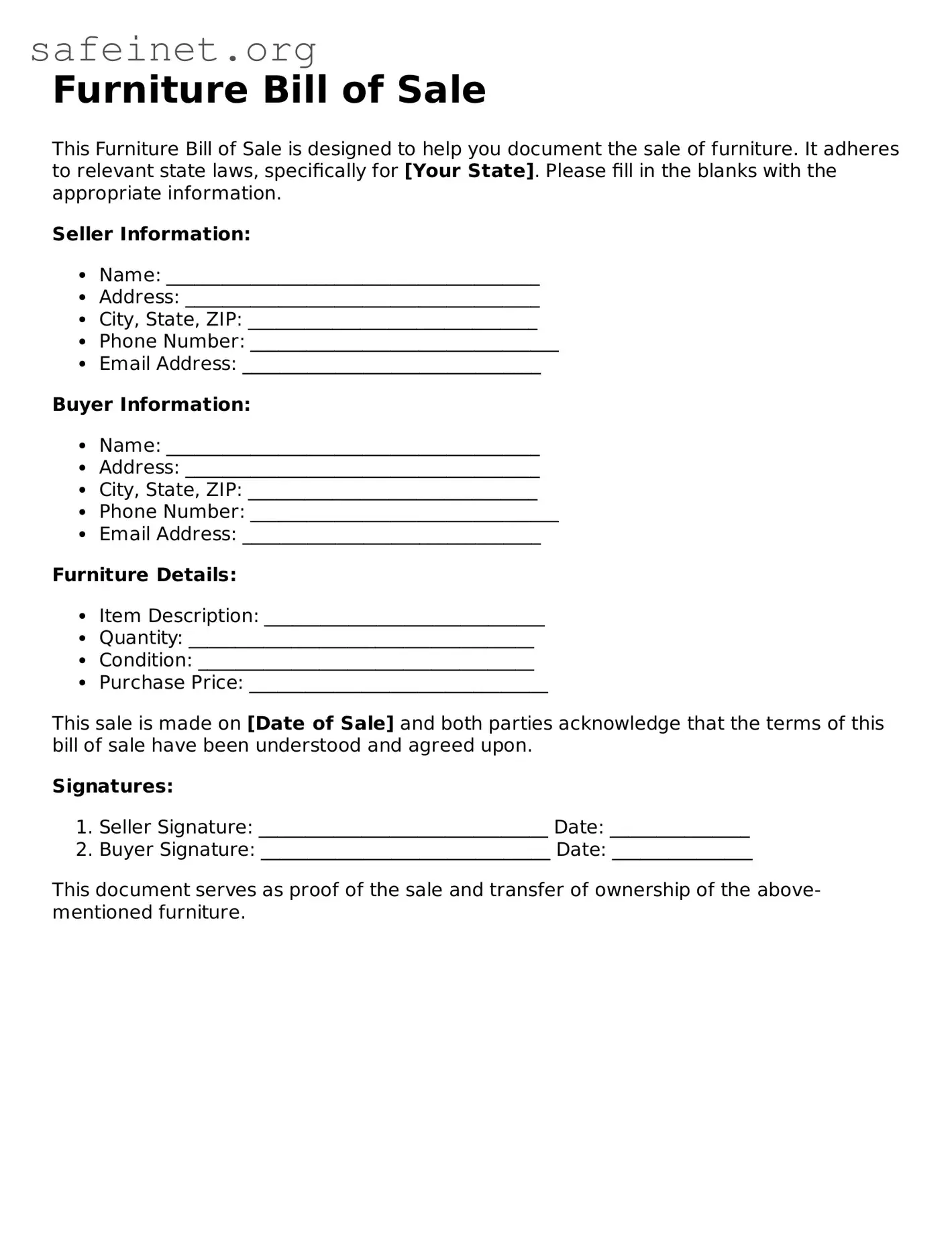What is a Furniture Bill of Sale form?
A Furniture Bill of Sale form is a document that provides proof of the sale and transfer of ownership of furniture between a buyer and a seller. This form typically includes details such as the description of the furniture, the sale price, and the date of the transaction.
Why is a Furniture Bill of Sale important?
This form serves as an official record of the transaction. It protects both the buyer and the seller by documenting the terms of the sale. In case of future disputes regarding ownership or condition, this document can be referenced as evidence.
What information is included in a Furniture Bill of Sale?
Common details found in a Furniture Bill of Sale include the names and addresses of the buyer and seller, a clear description of the furniture (including brand, model, and condition), the sale price, the date of the transaction, and any warranties or disclaimers pertaining to the furniture.
Is a Furniture Bill of Sale legally binding?
Yes, when properly filled out and signed by both parties, a Furniture Bill of Sale is a legally binding document. It confirms that the buyer has purchased the furniture from the seller, and it outlines the terms of the sale.
Do I need a notary to complete a Furniture Bill of Sale?
A notary is generally not required for a Furniture Bill of Sale, but having one can add an additional level of authenticity. It's advisable to check local laws, as certain states may have specific requirements.
Can I create my own Furniture Bill of Sale?
Yes, individuals can create their own Furniture Bill of Sale. However, ensuring that it includes all the necessary information and complies with applicable state laws is crucial. Templates are also available online for convenience.
How long should I keep a Furniture Bill of Sale?
It is recommended to keep a copy of the Furniture Bill of Sale for at least three to five years after the transaction. This timeframe allows for the resolution of any potential disputes or questions regarding the sale.
What if I lose my Furniture Bill of Sale?
If you lose your Furniture Bill of Sale, you can create a new document detailing the sale and have both parties sign it again. It may not have the same legal weight as the original, but it can serve as a record of the transaction if needed.
